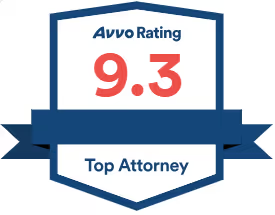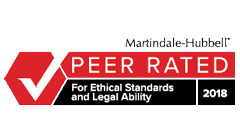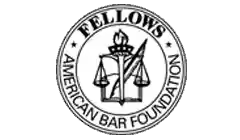The New York State Labor Law includes three sections which require owners and general contractors of building construction and demolition sites to furnish workers with a reasonably safe place to work so as to protect them from accidents and resulting injuries.
Labor Law Section 240
Section 240 of the Labor Law imposes a nondelegable duty to protect workers from gravity related risks. Section 240 cases typically involve falls of workers who are working at heights or falling objects. For example, cases involving a ladder or scaffold which moves or collapses resulting in a worker’s fall or a hoisted load which gives way or whose movement is not well controlled and impacts an employee would qualify under the protections afforded by section 240.

Under this section, owners and general contractors are absolutely liable for a violation of Labor Law 240 if that violation was a proximate cause of the worker’s injury; the worker’s comparative negligence, if any, does not go to diminish the awarded verdict.
Labor Law Section 240 requires those who contract for but do not direct or control the work, in the erection, demolition, repairing, altering, painting, cleaning or pointing of a building or structure to furnish or erect, or cause to be furnished or erected for the performance of such labor, scaffolding, hoists, stays, ladders, slings, hangers, blocks, pulleys, braces, irons, ropes, and other devices which are to be so constructed, placed, and operated as to give proper protection to a person employed at that site.
Where a gravity induced accident and worker injury proximately results from the failure to provide such a safety device, or where the provided safety device is defective or insufficient to prevent the accident, Labor Law section 240 liability applies.
Labor Law Section 241(6)
Labor Law section 241(6) and the case law which has interpreted that section imposes a non-delegable duty on site owners and general contractors to provide reasonable safety measures as specified in New York State Industrial Code provisions in all areas in which construction, excavation or demolition work is being performed. It requires the work to be so constructed, shored, equipped, guarded, arranged, operated, and conducted as to provide reasonable and adequate protection and safety to the persons employed therein or lawfully frequenting such places.
To state a valid claim under Labor Law 241(6), there must have been a violation of a concrete -- not a general -- provision of Part 23 of the New York State Industrial Code or of Part 12 of the Industrial Code if the Part 12 provisions are specifically incorporated by reference in the Part 23 regulations. Also, for there to be liability on a general contractor and owner under Labor Law 241(6), the Industrial Code violation must have been a proximate cause of the accident.
Unlike section 240, a worker’s comparative negligence in causing the accident goes to reduce a jury award under Labor Law section 241(6). Under this section, the general contractor and owner will not only be liable for their own violation of the Industrial Code which is a proximate cause of the accident but will also be held vicariously liable for the negligence of a subcontractor which results in the violation of a concrete Industrial Code provision which proximately causes the accident.
Labor Law Section 200
The final applicable section is Labor Law 200, which is a codification of common law principles. It requires the site owner and general contractor to take reasonable measures for worker safety, to provide for a safe work site and to provide for and promote safe methods of performing the work. To be held liable under this section, the site owner or general contractor is required to have either directed or controlled the means and methods of the work causing the accident or per some court holdings, have had the authority to do so. In addition, Labor Law 200 liability may also be found where the accident arose from a dangerous or defective worksite condition or hazard of which the owner or general contractor had actual or constructive notice.
Constructive notice is found where the dangerous condition existed for a sufficient period such that the owner or general contractor should have been aware of the dangerous or defective condition. Employee comparative negligence, if any, applies under this section.
Construction Workers Exposed to Flammable Toxic Substances
While constructing a new apartment complex in the Bronx, three construction workers, whom we represent, were directed to apply a bonding adhesive, typically used in outdoor roofing applications, in a below grade water detention tank, in an effort to waterproof the tank. A water detention tank is a below grade confined space, that accumulates water runoff deposited by gutters and pipes from the building’s roof; the detention tank then discharges that runoff into the New York City sewer system.
The bonding adhesive that our clients were directed to apply was highly volatile, toxic, readily flammable, and potentially explosive. Its indoor use in confined, unventilated spaces was contraindicated. The product is a contact adhesive whose intended use is to bond outdoor roofing materials together. It had low limits of flammability and could readily be ignited, even by static electricity according to the manufacture’s safety data sheet. There was no safety instruction and the workers did not have the data safety sheet.
As the workers were rolling on this bonding adhesive inside the enclosed tank, a flash fire occurred which rapidly engulfed them. The construction workers sustained second and third degree burns and severe respiratory injuries. Each were admitted to a local hospital. Each was ventilated to protect their airways, and all underwent surgeries to treat their severe burns. All three have disfiguring scars and have been disabled from work since the accident.
This case presents numerous Industrial Code violations sufficient to state a Labor Law 241(6) case. For instance, the confined space of the water detention tank was not mechanically ventilated. The single open roof hatch on the tank was not capable of passively exhausting the adhesive’s heavier-than-air vapors which accumulated as the work proceeded within the tank. Once the flash fire erupted, it blocked the ladder used to access the hatch on the roof of the tank, which made escape impossible.
The workers were not trained in confined space work so as to understand the risks posed by this toxic flammable adhesive when applied in a confined, unventilated space. Moreover, the masks which were provided to our clients were insufficient to protect them from respiratory injuries. Air contamination readings were not taken before and during the application of the bonding adhesive.
We also maintain that the owner and general contractor violated section 200 of the Labor Law and common law negligence principles. They had the authority to direct subcontractor’s work and had notice of this job. Good and accepted construction safety practices were not adhered to. The adhesives inherent dangers should have been but were not discussed at any prior tool-box meeting. Clearly, the general contractor’s site superintendent and safety officer neglected to see that the waterproofing work was done safely.
Multiple Building Code citations were issued as a result of the accident. Moreover, we assert that the owner and general contractor failed to adhere to applicable provisions of the New York State Building Code, OSHA requirements, and safe and well accepted construction customs and practices.
Beyond that, the multiple defendant companies were operated as if they were one company, dominated and owned, in whole or in part, by a single managing member. Under these facts and case law, both the direct employer and the general contractor are both liable for each other’s negligence and Labor Law violations.
Speak with a Construction Accident Attorney
We invite you to contact us in the event that you have sustained a serious injury during construction, excavation, demolition, or related work, and would like The Jacob D. Fuchsberg Law Firm to evaluate, without charge, whether you may have a case.
FAQ

.svg)











